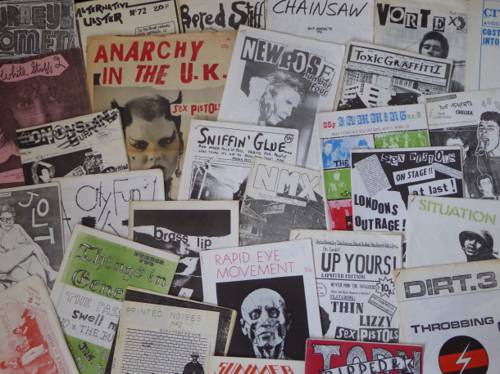
FAQ About The Role of Fanzines in DIY Culture

What is a fanzine?
A fanzine is a self-published, non-commercial magazine created by enthusiasts of a particular cultural phenomenon, such as music, science fiction, or comics. They are often produced using DIY methods, with content ranging from personal essays to art and manifestos, and serve as a platform for niche interests.

How did fanzines originate?
Fanzines originated in the 1930s within the science fiction fan community. Fans produced these amateur publications to share ideas, stories, and critiques, as well as to build communities around their favorite science fiction works.

What is DIY culture?
DIY culture is a subculture rooted in self-sufficiency and creating or building things independently rather than purchasing them. This ethos extends to music, art, craft, and publishing, where individuals produce and distribute their works without relying on professional assistance or corporate backing.

Why are fanzines important to DIY culture?
Fanzines embody the DIY ethos by allowing individuals to create and share their interests without mainstream media filters. They provide a genuine, grassroots platform for creativity, expression, and community building, often challenging cultural norms and supporting niche interests.

How are fanzines made?
Fanzines are typically made using simple materials like scissors, glue, and photocopiers. Content is often hand-written or typed and photocopied to distribute. Modern technologies, like personal computers and digital design software, have also facilitated fanzine production, but the ethos of DIY and low-budget remains central.

What subjects do fanzines cover?
Fanzines cover a broad spectrum of subjects, from music genres like punk and indie to comics, sci-fi, politics, personal stories, and social issues. The content is as diverse as the interests of its creators, often reflecting and challenging the mainstream views.

Who typically creates fanzines?
Fanzines are typically created by dedicated fans and enthusiasts who have a passion for a particular subject and want to explore it further. These creators are not usually professional writers or artists; rather, they are individuals driven by enthusiasm and a desire to express and share their personal viewpoints.

How do fanzines foster community?
Fanzines foster community by providing a platform for like-minded individuals to share ideas, creativity, and opinions. By circulating among niche audiences, they help create networks of fans and enthusiasts who engage with each other, support new ideas, and build a sense of identity around their shared interests.

Are fanzines still relevant today?
Yes, fanzines are still relevant today, both in print and digital forms. Despite the dominance of digital media platforms, the tactile, personal nature of fanzines continues to attract creators and readers. They remain a vital space for authentic expression and community engagement, often highlighting underrepresented voices and perspectives.

What is the difference between a fanzine and a magazine?
While both fanzines and magazines are periodicals, fanzines are distinct due to their non-commercial nature, amateur production methods, and focus on niche interests. Magazines are generally professionally produced, commercially driven, and aim to reach a broad audience, whereas fanzines are intimate and often limit their distribution to specific subcultures.

Can fanzines be digital?
Yes, fanzines can be digital. Although traditionally associated with print, many creators have embraced digital platforms to publish their fanzines. This allows them to reach wider audiences while maintaining the DIY ethos. Digital fanzines still focus on niche interests, authenticity, and personal expression.

What role do fanzines play in music culture?
In music culture, fanzines play a crucial role by documenting and promoting underground scenes and genres, such as punk, metal, and indie. They offer a platform for musical reviews, band interviews, and the sharing of fan experiences, often influencing tastes and trends within the music subcultures they cover.

How do fanzines promote independent art?
Fanzines promote independent art by providing a venue for artists to share their work outside of established galleries and commercial venues. They offer exposure to emerging artists and provide art enthusiasts with a direct line to creative works that might otherwise be overlooked by mainstream media.

What challenges do fanzine creators face?
Fanzine creators often face challenges such as limited resources, lack of distribution channels, and the time-intensive nature of production. Maintaining financial sustainability can also be difficult as most fanzines are non-commercial endeavors funded out of pocket or through small donations.

How can someone start their own fanzine?
To start a fanzine, identify a subject you are passionate about and define the audience. Gather content such as articles, art, and photos, then design the layout using simple tools or software. Print copies using a photocopier or an affordable print service and distribute them within your community or use digital platforms to reach a wider audience.

What is the significance of fanzines for marginalized voices?
Fanzines have significant importance for marginalized voices by providing an unfiltered platform to express their stories, perspectives, and issues. They challenge mainstream narratives and amplify voices that might otherwise be silenced, fostering inclusivity and diversity within DIY and broader cultural contexts.

How have modern technologies affected fanzine production?
Modern technologies have significantly impacted fanzine production by making it easier and more cost-effective to create and distribute. Digital design tools, online printing services, and social media platforms enable broader reach and experimentation with formats, though the DIY spirit remains a cornerstone of fanzine culture.

Are there famous fanzines that influenced mainstream culture?
Yes, some fanzines have had substantial influence on mainstream culture. For example, "Sniffin' Glue", a punk fanzine, played a critical role in the punk movement of the 1970s. These fanzines often captured and shaped cultural phenomena before they entered mainstream consciousness.

What is an example of a successful fanzine event or gathering?
An example of a successful fanzine event is the annual "Zine Fest" gatherings, which are held in various cities worldwide. These events bring together fanzine creators, collectors, and enthusiasts to celebrate and exchange zines, conduct workshops, and discuss themes relevant to DIY publishing.

How do fanzines differ across various cultures?
Fanzines differ across cultures in themes, aesthetics, and the issues they address, reflecting the unique cultural, social, and political climates of their origin. Each culture brings its own motifs, visual styles, languages, and societal concerns, enriching the global landscape of fanzine culture with diversity and varying perspectives.
